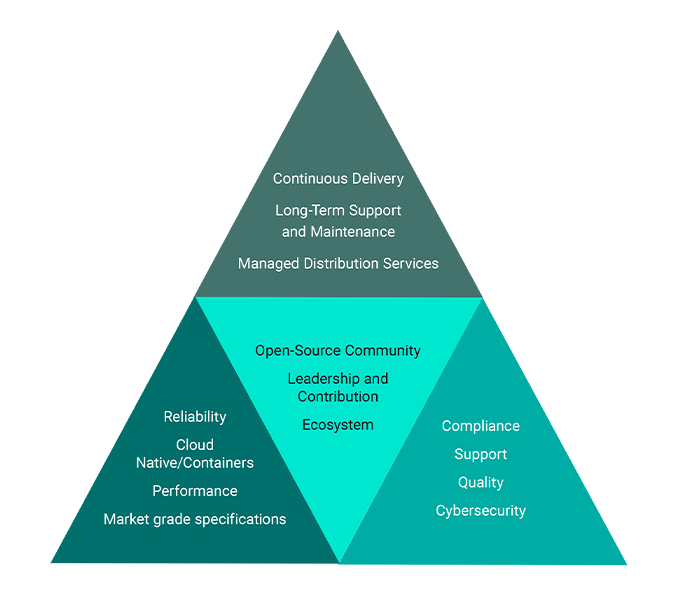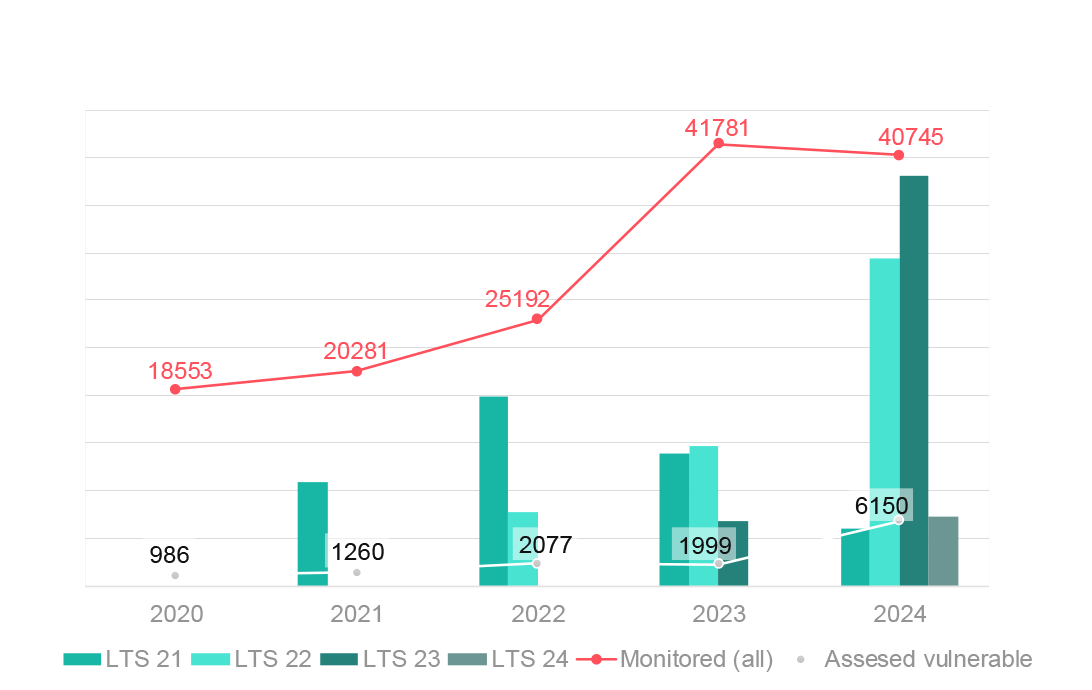What Is the Yocto Project?
The Yocto Project is an open source project specifically for the embedded space and intelligent edge deployments. Whereas other Linux distributions are built for enterprise servers and workstations and then (possibly) tailored down for embedded/edge use cases, the Yocto Project enables the build of customized distributions for such devices. In various vertical markets with myriad of heterogeneous requirements, the project seeks to define a common ground for embedded development, independent of the underlying architecture of the hardware.
Since its launch in 2010, the Yocto Project has evolved to become one of the largest communities under the Linux Foundation umbrella of collaborative open source projects. It gathers the top names in the industry, applies best practices for open source, and defines the attributes of embedded OS development and product lifecycles with the tools it offers. With the proliferation of Internet of Things (IoT) and intelligent edge deployments, the Yocto Project became the go-to framework for building customized, lightweight, and secure Linux distributions tailored to diverse hardware platforms and constrained environments.
The Yocto Project is a suite of tools and processes enabling the developer to build, from the ground up, an embedded Linux distribution on a broad set of hardware architectures.
Key Benefits of the Yocto Project
- Aggregates best-of-breed infrastructure, recipes, and tools for building a custom distribution
- Reduces duplication of effort
- Increases collaboration and reuse between commercial partnerships and open source communities
- Leverages the benefits of other open source projects, such as OpenEmbedded and Eclipse
Yocto Project Fast Facts
- In 2010, the Yocto Project was announced as a new work group under the Linux Foundation; Wind River® was one of the 22founding companies.
- In 2025, with more than 30 member companies, and 4000+ contributors, the Yocto Project estimated software value generated by the initiative is over $30M USD, according to Linux Foundation’s LFX Insights.
- The Yocto Project is one of the largest and most influential open source initiative in the world, recognized as friendly and collaborative and community-driven effort.
Difference Between Yocto Project Poky and OpenEmbedded
Poky is the reference operating system distribution built with Yocto Project tools, and OpenEmbedded is a build framework of recipes and packages. OpenEmbedded supports many hardware architectures with cross-compilation infrastructure. The community uses it to validate Yocto Project features and functionality, but it also serves as example for any user who builds their own custom distribution.

Yocto Project Contributing Companies
The project began with a mix of companies and initiatives serving the embedded space, such as: silicon vendors, embedded software providers, open source communities and commercial Linux OS vendors. Today the Yocto Project has more than 30 member companies, addressing a larger variety of markets and enabling new types of intelligent edge use cases. The list of member companies includes AWS, Arm, Intel, Qualcomm, Microsoft, and Wind River.

Differences Between Embedded Linux Distributions
Yocto Project vs. Ubuntu Core
Yocto Project is not a distribution — it is a set of tools to develop a distribution. Ubuntu Core is a Linux distribution delivered in binary.
Yocto Project vs. Buildroot
Buildroot is small and simple, and it gives quick results. Yocto Project needs more time to build the image and requires more disk space. On the other hand, its layers are easier to maintain and, because it’s a complex build system, it provides more options to customize and more granular control to configure.
Yocto Project vs. Debian
Debian, delivered in both source and binary, originated in the enterprise space for servers and workstations. The Yocto Project was created specifically to address specific requirements for embedded devices built for resource constrained architecture, long-term deployments in highly regulated markets.
How Can Wind River Help?
Wind River Linux LTS
Wind River provides the industry’s most advanced embedded Linux development platform. Its comprehensive suite of products, tools, and lifecycle services helps our customers build and support intelligent edge devices in segments such as aerospace and defense, industrial, medical, automotive, telecommunications and more.
Wind River Linux LTS enables customers to build and deploy robust, reliable, and secure Linux-based edge devices and systems without the risk and development effort associated with roll-your-own (RYO) in-house efforts. You can keep your code base up-to-date, track and fix defects, apply security patches, and customize your runtime to adhere to strict market specifications and certifications. Wind River can also facilitate your IP and export compliance and significantly reduce your costs.
Wind River has been the global leader in the embedded software industry for 40 years, has spent more than 20 years as an active contributor and committed champion of open source, and has a proven track record of helping customers build and deploy use case–optimized devices and systems.

Wind River Linux is running on millions of devices deployed worldwide, and the Wind River Linux suite of products and services offers a high degree of of confidence and flexibility as you prototype, develop, and move to real deployment.
Wind River Linux Development Practices
- Wind River uses industry best practices for continuous integration and DevOps to build, test, and release software.
- Wind River is using latest OpenChain standard and guidelines to certify our compliance; OpenChain is a key initiative that defines standards for open source compliance in the supply chain.. This is important because, in the event of an audit, you will be able to demonstrate supply chain integrity. Wind River Linux LTS subscription acts as your insurance policy for compliance for your Linux-based product deployments.
- Wind River is the first Linux-based commercial offering with ISO 9001–certified development and release processes.
Quality, Compliance, and Certifications
Wind River can assist design teams with defining and building market-specific requirements for security, safety, and certification. Wind River Linux follows strict engineering processes that are certified to ISO 9001:2015 and audited regularly for quality.

Wind River Linux Services
Wind River offers a comprehensive suite of support and integration services to enhance the speed and quality of a market-differentiated Linux solution for deployment — regardless of which Linux you chose. Whether you sourced your Linux from the Yocto Project, from a board vendor, or from another commercial vendor, Wind River has deep expertise in Linux with more than 20 years of embedded, real-time, and Linux expertise across all markets.
Linux Services include:
- Platform architectural assessments, software design, and implementation
- Security vulnerabilities alerts, analysis, and mitigation
- Long-term Linux platform security and defect maintenance and support
- Performance and reliability requirements
- The latest industry-specific features and standards that can be quickly customized to further accelerate development
- IP compliance audits and remediation recommendations
With Wind River, organizations can engage in any way they wish, with access to guidance and assistance available at every step in the product development lifecycle.
>> Learn moreSecurity
Wind River addresses security on many levels:
- CVE monitoring, assessment notification, and remediation
- Integrated Secure Development Lifecycle (SDL) principles
- Inclusion of many common security packages in our distribution
- Regular updates that include security fixes
- OS hardening and cybersecurity capabilities, including Linux kernel hardening and allowlisting

Data source Wind River CVE Database
Community Leadership
There are many work groups and organizations, mostly sponsored by the Linux Foundation, that define the requirements for vertical market solutions. Wind River, a founding member of the LF Edge and Yocto Project, actively participates in and contributes to these work groups. Wind River is also a member of the LF Energy group and is working on that project to help define next-generation digital substation automation systems.